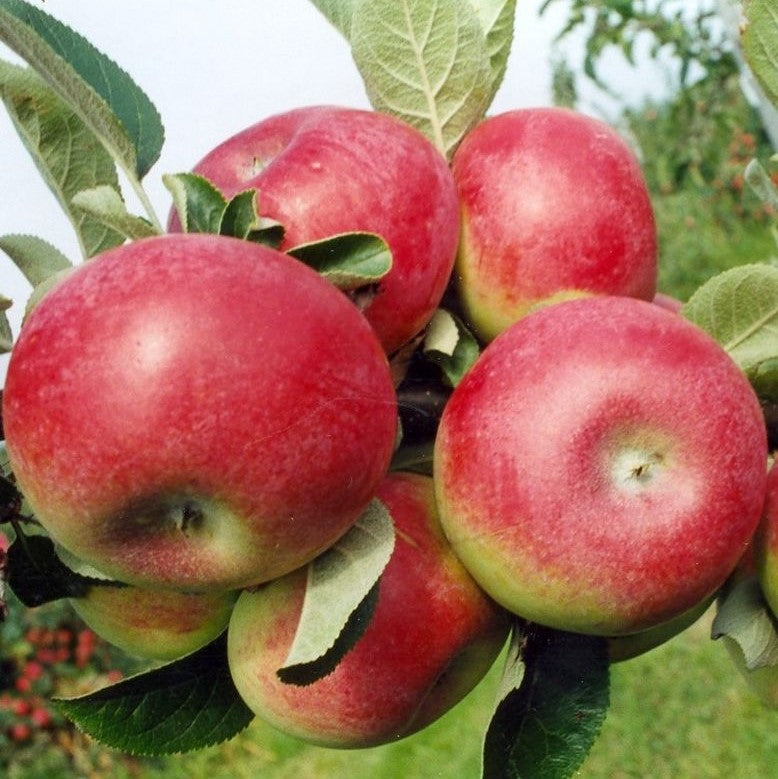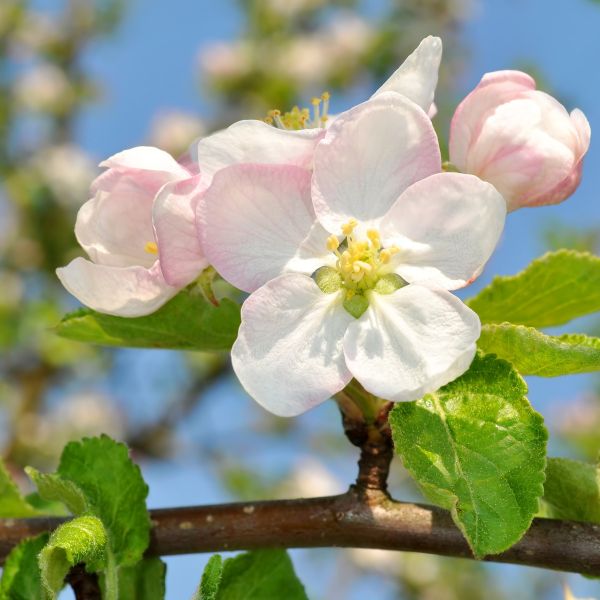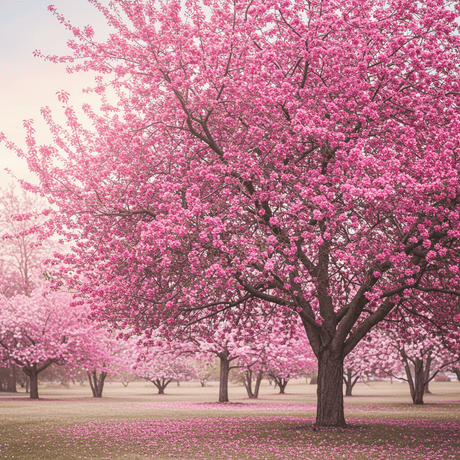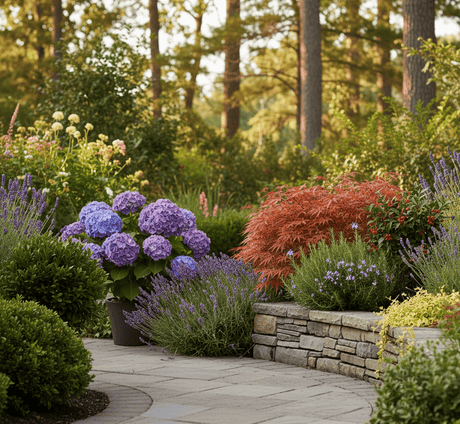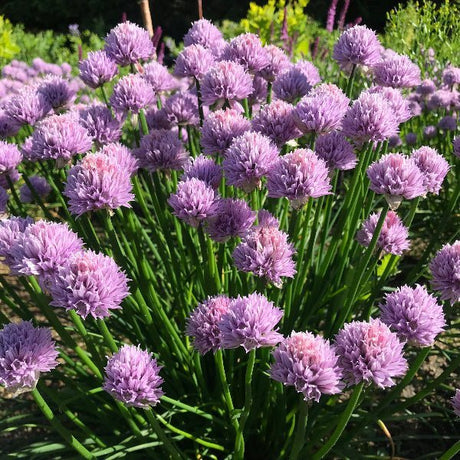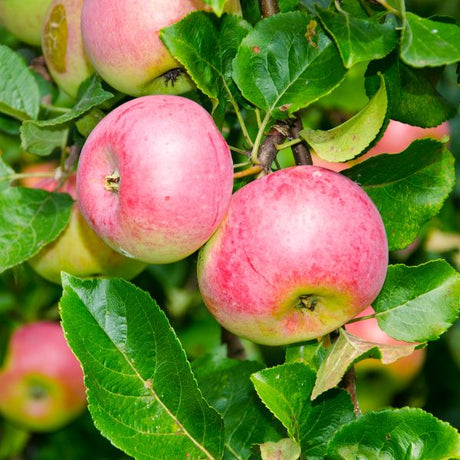McIntosh Apple Tree
Malus 'McIntosh'
McIntosh Apple Tree - #2 Container 4-5 Feet is backordered and will ship as soon as it is back in stock.
- Stay Protected with Plant Sentry ™
Plant Sentry™
Plant Sentry™

Plant Sentry™ Protected
Your order is protected by our compliance system that:
- Prevents restricted plants from shipping to your state
- Ensures plants meet your state's agricultural requirements
- Protects gardens from invasive pests and diseases
Delivery and Shipping
Delivery and Shipping
Delivery and Shipping
Fast, Safe Plant Delivery
Ships in 3-4 business days • Tracking provided • Weather protected
| Under $50 | $9.99 |
| $50 - $99.99 | $14.99 |
| $100 - $149.99 | $16.99 |
| $150 - $198.99 | $24.99 |
| $199+ | FREE |
✓ Zone-specific timing • ✓ Professional packaging • ✓ Health guarantee
Understanding Plant Options
Nature Hills offers plants in two main formats:
- Container Plants: Grown in pots with soil, sized by container volume and plant age
- Bare Root Plants: Dormant plants without soil, sized by height measurements
Container Plant Sizes
Container sizes indicate plant age and growing capacity rather than liquid volume equivalents. Our containers follow industry-standard nursery "trade gallon" specifications, which differ from standard liquid gallon measurements.
Young Plants (6 months to 18 months old)
| Container Size | Actual Volume | Metric Equivalent |
|---|---|---|
| 2" x 2" x 3" | 0.18 - 0.21 dry quarts | 0.20 - 0.23 dry liters |
| 4" Container | 0.31 - 0.87 dry quarts | 0.35 - 0.96 dry liters |
| 4.5" Container | 0.65 dry quarts | 0.72 dry liters |
| 6" Container | 1.4 dry quarts | 1.59 dry liters |
| 1 Quart | 1 dry quart | 1.1 dry liters |
| 5.5" Container | 1.89 dry quarts | 2.08 dry liters |
Established Plants (18 months to 2.5 years old)
| Container Size | Actual Volume | Metric Equivalent |
|---|---|---|
| 2 Quart | 2 dry quarts | 2.2 dry liters |
| #1 Container | 2.26 - 3.73 dry quarts | 2.49 - 4.11 dry liters |
| 5" x 5" x 12" | 3.5 - 4.3 dry quarts | 3.85 - 4.74 dry liters |
Mature Plants (2-4 years old)
| Container Size | Actual Volume | Metric Equivalent |
|---|---|---|
| #2 Container | 1.19 - 1.76 dry gallons | 5.24 - 7.75 dry liters |
| #3 Container | 2.15 - 2.76 dry gallons | 8.14 - 12.16 dry liters |
Large Plants (3-5 years old)
| Container Size | Actual Volume | Metric Equivalent |
|---|---|---|
| #5 Container | 2.92 - 4.62 dry gallons | 12.86 - 20.35 dry liters |
| #6 Container | 5.25 - 6.01 dry gallons | 23.12 - 26.42 dry liters |
| #7 Container | 5.98 - 6.53 dry gallons | 26.34 - 28.76 dry liters |
Bare Root Plants
Bare root plants are sold by height from the root system to the top of the plant. Plants may exceed minimum height requirements.
Common Sizes:
- Trees: 1 foot, 2 feet, 3 feet, 4 feet, 5 feet, 6 feet
- Shrubs & Perennials: 1 foot, 18 inches, 2 feet
Important Notes
Container Volume Specifications
- Trade Gallon Standard: Our containers follow industry-standard "trade gallon" specifications established by the American National Standards Institute (ANSI Z60.1) for nursery stock
- Volume Variations: Actual soil volume may vary due to plant root systems and growing medium settlement
- Age Indicators: Container size primarily indicates plant age and maturity rather than liquid volume equivalents
Growing Conditions
- Plant size can vary based on variety and growing conditions
- Container size helps indicate plant maturity and establishment level
- Larger containers generally mean more established root systems and faster landscape establishment
Seasonal Availability
- Bare root plants are available seasonally when dormant
- Container plants are available throughout the growing season
- Specific varieties may have limited availability in certain sizes
Questions?
For questions about specific plant sizes or availability, please contact our plant experts who can help you choose the right size for your landscape needs.
Plant Highlights
McIntosh Apple Tree highlights at a glance!
-
Botanical Name
-
Brand
-
Growing Zones4, 5, 6, 7, 8
-
Growth RateModerate
-
Mature Height
-
Mature Width
-
Leaf Color
-
Flower Color
-
Fall Color
-
NativeYes
-
Pollinator FriendlyYes
-
Pollinator Required
-
Bloom PeriodLate Spring
-
FragrantYes
-
Does Not Ship To
Characteristics
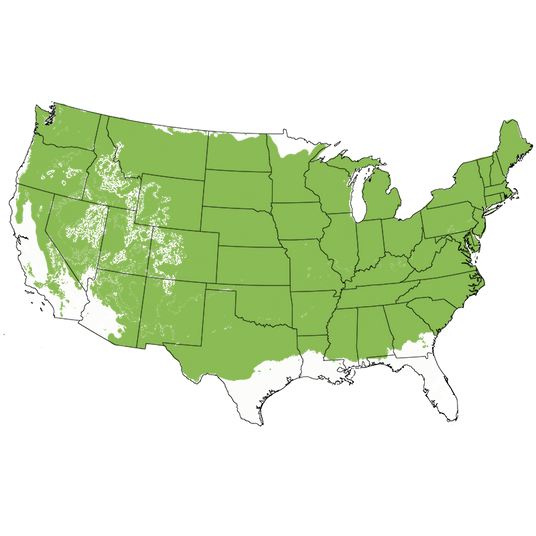
Growing Zones
McIntosh Apple America's Favorite Heritage Variety
McIntosh Apple is famous not for its crunch, but rather the snap. From the first bite, the classic McIntosh snap of the skin alerts you to prepare for the perfect blend of tartness to sugar which is so much the reason for its popularity.
McIntosh Apple tree produces heavy crops of small to medium-sized apples that ripen and are ready for harvest around mid-September. Often, McIntosh Apple crops persist into early winter, as this tree is hardy and can easily withstand colder temperatures.
The tree is cold hardy, but it's also adapted to a wide range of climates. Recent studies have determined McIntosh to have a low chill requirement, as well. Fruit sets have been reported into what would be considered extremely low chill zones 10 and 11a.
The classic Apple tree in the landscape, the McIntosh is a decorative addition to your yard with its show of delicate Apple blossoms in early spring. As the Apples begin to develop, you'll enjoy watching as your fruit transitions into red over green, decorating the tree amid the vibrant dark green leaves.
When you're craving Apples at the end of the summer, growing your own McIntosh tree is here to satisfy your sweet tooth. Not only do McIntosh Apples grow from lovely trees, but these delicious apples also ripen early in the season, making them a convenient go-to snack. These Apples are great for eating.
Key Features
- Early Ripening Fruit
- Heavy Producing
- Adapted to a Wide Range of Climates
- Both Cold Hardy and Low Chill
- Famous Heirloom Variety
- Disease Resistant
- Chilling Requirements: Moderate to High 500 to 1000 hours
Classic All-Purpose McIntosh Apple Tree
The sweet-tart taste and tender white flesh of the McIntosh Apple make it great for snacking. But there is a lot more to this unique variety than just fresh eating. The "Mac's" were the first of the all-purpose Apples.
McIntosh Apples have the perfect balance of acid to sugar. This makes them great for butter, jelly, and cider. And no county fair would be the same without a McIntosh candied apple on a stick.
For bakers, McIntosh cooks down into a soft consistency. Slice and mix with other varieties, such as Winesap, or Gala Apples to produce the perfect filling for the world's best Apple Pie. And there is nothing that beats the flavor of a "Mac" apple sauce.
Don't delay in getting this tree planted in your garden. The sooner you plant, the faster you'll begin enjoying the wonderful fresh fruit harvest from your backyard.
Pollination Partners for McIntosh Apples
McIntosh requires a pollinator, so when planting, remember to think of a later or earlier ripening variety to extend your harvest of apples. Be sure to select varieties that are recommended for the USDA Growing zone you are planting in. Enter your zip code in the Zone Finder to see what zone you are in.
An early ripener, the McIntosh apple tree is one of the earliest of the apples to ripen. When planning your selection, don't forget to plant a few Apple varieties. McIntosh will be your early ripening variety.
To extend your season of harvest, plant the McIntosh with the mid-season Winesap and a late-season Arkansas Black Apple. You'll gain an heirloom harvest of some of the finest-eating Apples known. To increase pollination, plant your McIntosh with another Apple tree like the Anna, Centennial Crabapple, Cox's Orange Pippin, CrimsonCrisp, Cripps Pink, Cripps Ted, Dolgo Crabapple, Freedom, Frostbite, Fuji, Granny Smith, Haralson, Jonathan, SnowSweet, Sweet Sixteen, Wealthy, WineCrisp, Wolf River.
#ProPlantTips for Care
This crisp, juicy Apple grows best in well-drained soil with full sun exposure. A moderate amount of moisture is required to ensure the McIntosh tree produces a full crop of delicious, ripe apples.
You'll want to plant your McIntosh where it will get plenty of sunlight, as full sun exposure is needed to grow. Fruiting time can take anywhere from three to five years, but if you have a little patience, the apples this tree produces are well worth the wait.
McIntosh Apple can be maintained to any height with pruning. It is always recommended that fruit trees be maintained below 10 feet for ease of maintenance and harvesting.
All apples require a certain amount of care in different regions of the country. Check with your local Ag Extension Agency to find out apple care recommendations for your area. Nature Hills carries a wide range of natural and conventional products to help with your fruit tree care.
When planting, mix some HSU Growing Supply Leaf Compost into soils with low organic matter to get your tree off to a great start, In any soil, the Fertilome Root Stimulator will aid in the quick adjustment of its new home.
McIntosh Apple was a chance seedling discovered by John McIntosh in the early 1800s, while clearing his property in Fall St Lawrence and Alexander, Canada. By the beginning of the 20th century, the McIntosh Apple was the #1 variety planted in Canada and throughout the upper Midwest and East Coast in the United States.
Order one of America's favorite Apple Trees today!
McIntosh Apple Tree Frequently Asked Questions
When to Plant McIntosh Apple Trees
Planting Bareroot trees as soon as you can dig a hole in spring and until hot weather, the earlier the better. Plant container Apple trees throughout the growing season with complete success - that is the benefit of container plants - to extend the planting season. Your County Agricultural Extension Office is a great resource for first and last frost dates in your area.
How do you plant McIntosh Apple Trees
Dig a large hole only as deep as needed to accommodate the bareroot or container root ball, and twice as wide. Add Nature Hills Root Booster to speed root establishment. Remove the pot or bag and situate it into the hole so the top of the soil (soil line if bareroot), is level with the new location's soil being careful not to plant too deep. Water in again very well and backfill with the same soil you dug up, tamping down gently to ensure there are no air pockets.
Top off with a 3-4 inch thick layer of Arborist mulch. Consider staking your tree to keep its trunk growing straight for the first year to ensure it stands tall against strong winds and drifting snow.
When to Prune McIntosh Apple Trees
Trim off any broken branches from delivery as soon as you take them out of the box. Prune and trim Apple trees while dormant, in late winter or early spring, before you see new growth.
How to Prune McIntosh Apple Trees
Dormant prune to:
- Remove any double leaders or narrow crotch angles
- Eliminate any crossing branches
- Thin interior branching and leave the fruiting spurs and strong branches in place opening up the canopy
- Branching at least 24-36 inches above the ground
Prune Apple trees in the summer to:
- Control size and shape by reducing the length of longer new growth on vigorous trees
- Remove water sprouts on the main trunk or older branches in the crown
- Remove suckers at the base of the trunk
- Thin fruit during heavy years on established trees
How to Care for McIntosh Apple Trees
Growing an Apple tree is easy when proper soil, good drainage, attention to moisture, and regular fertility are maintained. Once you've chosen an apple tree that works for your climate, in the size you need for your landscape, and its pollinator (if needed), then you've accomplished half the battle!
- Apple trees do best in full sun and well-drained soil
- Water your apple trees when it gets dry - especially during the fruit production stage, and drought periods to keep it stress-free
- Use arborists' wood chips to mulch over the roots of your apples and have your soil tested to see what your soil may be lacking before adding fertilizers
- Maintenance pruning and shaping
Apple trees will tolerate a wide range of soils, so long as water and nutrients are not limited and the pH level is adequate.
How to Fertilize McIntosh Apple Trees
For the first year, water alone is most important. It is always best to get a soil test to see what your soil is lacking before adding more fertilizers. Once established, a fertilizer routine may be beneficial. We do offer some excellent slow-release organic options, applied according to the package directions.
Fruit trees need more phosphate and it's possible to apply too much nitrogen which affects the soil's pH. Test soil acidity or alkalinity using a pH Tester.
Fertilize in spring when you first see new growth emerging.
- Don't overdo it
- Phosphates are your friends
- Pay attention to pH in areas with extremely high or low soil pH
- Follow the directions
McIntosh Apple Tree Pollinating Info
McIntosh is not self-fruiting and needs a pollinating partner. Pair with one of these varieties:
- Anna
- Centennial Crabapples
- Cox's Orange Pippin
- CrimsonCrisp
- Cripps Pink
- Cripps Ted, Dolgo Crabapple
- Freedom
- Frostbite
- Fuji
- Granny Smith
- Haralson
- Jonathan
- SnowSweet
- Sweet Sixteen
- Wealthy
- WineCrisp
- Wolf River
Harvest Times for McIntosh Apple Trees
McIntosh's are typically ready to harvest in September.
Early-Season? Mid-Season? Late-Season? The terminology can be confusing for new apple tree growers. Weather, climate and your tree determine when it's ripe.
For Apples:
- Early-season is usually June-July
- Mid-season can be August-September
- Late-season can be from late September-November
The growing season consists of spring, summer, and fall, and varies with climate and weather. Areas with longer growing seasons in the warmer hardiness zones can greatly affect the harvest times for each particular apple variety grown in your area.
Rootstocks Explained
Apple trees have been grafted onto different rootstocks since before the mid-1800s. Different rootstocks are used to improve the anchoring of trees, eliminate diseases, and reduce the natural mature size of the tree itself. While there are many different types of rootstock, they are all labeled as being either Dwarf, Semi-Dwarf, or Standard.
The Apple descriptions, including flowering, pollination, and apple characteristics are the same whether the plant is grown on a standard rootstock or some varying dwarfing rootstock. The overall size can vary by climate and soil but the understock used is ultimately what affects the mature size.
There will be some variation in sizes but as a guide, we are suggesting the overall mature size of these apple varieties are:
Semi-Dwarf Apples
- Height: 12-18 feet
- Spread: 10 - 15 feet
Standard Apples
- Height 18 - 25 feet
- Spread: 15 - 18 feet
Remember that all fruit tree sizes can easily be altered if needed by simple pruning as the trees grow and develop.
Mysterious McIntosh Apple
The story of the McIntosh Apple is a story of love and luck, and it will continue to be told for years to come.
John McIntosh was born in 1777 in the Mohawk Valley in New York. There, he met the love of his life, Dolly Irwin. John's family did not approve of Miss Irwin's family who were loyalist. In 1796, McIntosh would leave his family to follow his love to Upper Canada. Unfortunately, by the time he finds the family, Dolly Irwin had passed away.
John settles in as a farmer in this harsh northern climate and makes modest gains. In 1801, he marries Hannah Doren and continues to farm until 1811, when he swaps his land for some undeveloped land that his brother-in-law has. Though the land was undeveloped, it had promise.
While clearing the land, John comes upon a group of wild seedling apples which he recognizes. Knowing that the climate was not the best for apple trees, he transplants them to his yard hoping that a more adapted apple variety might occur. What came out of those wild apple seedlings was the McIntosh Apple.
John McIntosh began selling seedling of his special fruit, but the fruit from the seedlings were never that good. Then, about 1835, John's son Allan (who many say should be credited with the introduction) learns about grafting and soon begins selling the apple variety, called the McIntosh Red, from the family farm.
It is still unknown what the parent varieties are, but some speculate that the Fameuse, also known as Snow, has many traits in common. Though in the early 1800's, in Upper Canada, there are very few other apple varieties besides Crabapples to act as a parent cross. Others have speculated varieties Fall St. Lawrence and Alexander as the parent cross. So, the mystery of the delicious McIntosh Apple continues.

